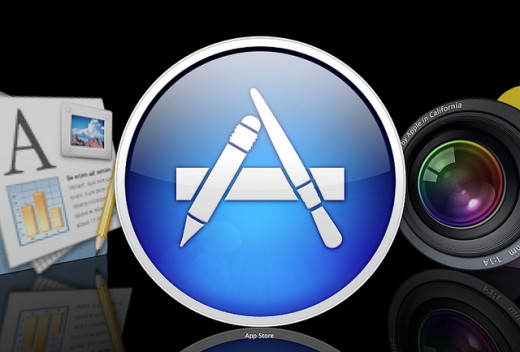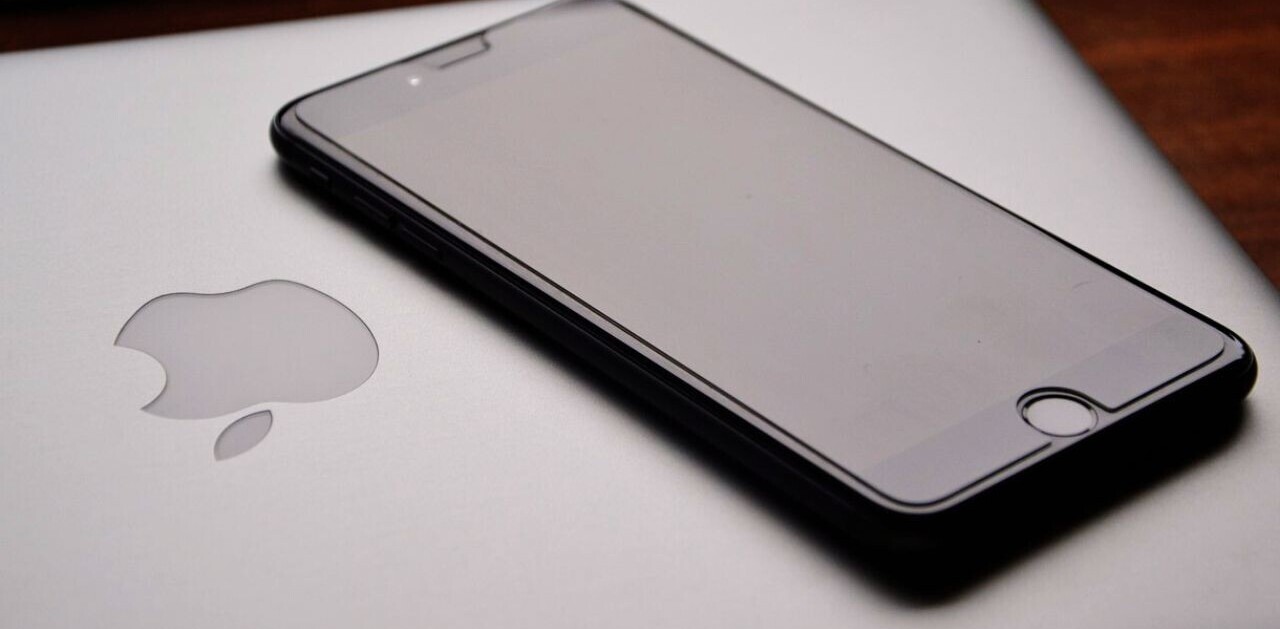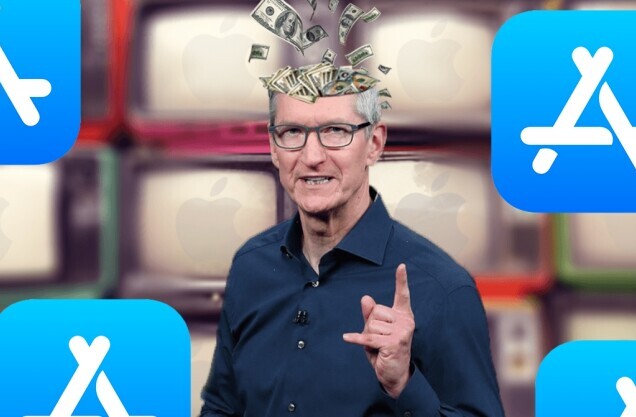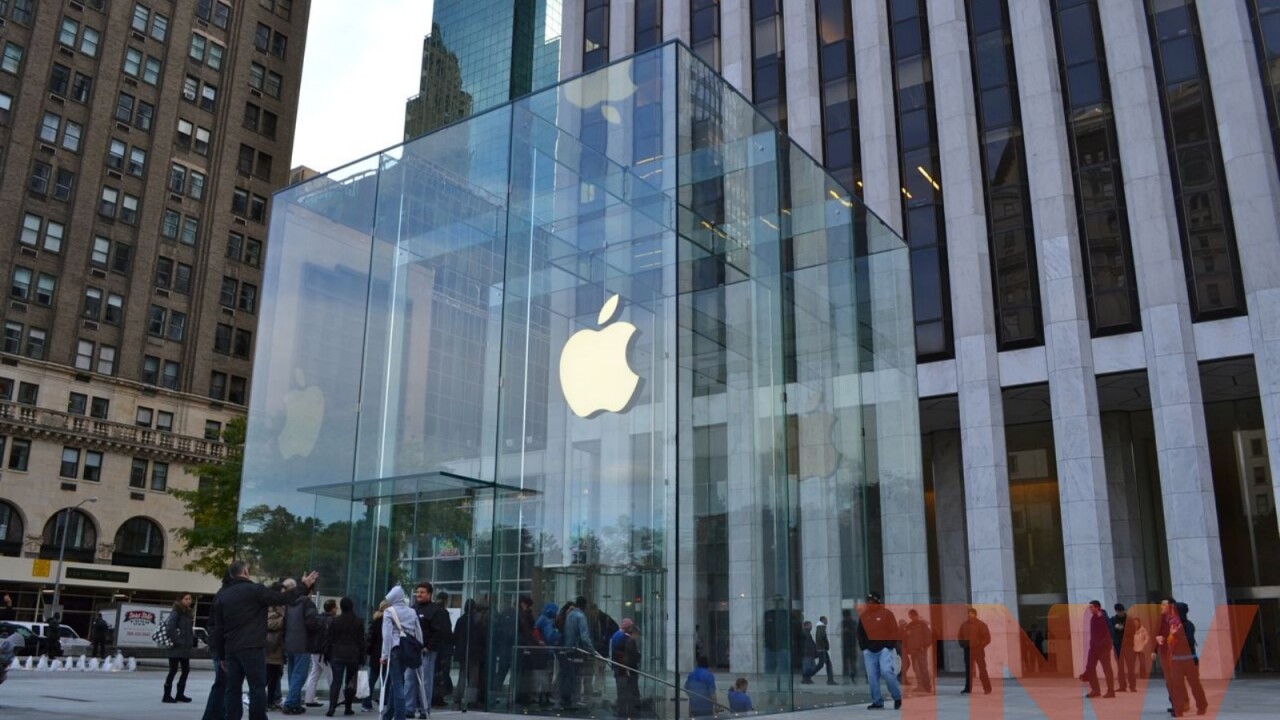
Each year we say it’s been a big year for everything Apple, but with the death of its co-founder Steve Jobs and its rise to snatch the title as the world’s most valuable company based on market cap for a limited time, you could say that 2011 has been its biggest yet.
As part of our retrospective on everything tech, we’ll outline the biggest things that happened at Apple over the past year and comment on the products and services it has delivered to ensure its revenues continued to climb and consumers switched to the Apple way of life.
The Mac App Store launches, hits impressive milestones
With just a week gone in 2011, Apple finally delivered a desktop version of its iOS App Store in the form of the Mac App Store.
To take advantage of the new marketplace, Mac users were required to install an updated version of Apple’s Snow Leopard operating system (Mac OS X 10.6.6), gaining access to more than 1,000 apps at launch. Amongst the new apps available on the store was Twitter’s first native Mac application and a whole host of titles that had previously only been available via developer websites.
Apple used its own platform to deliver updates to its software. Some were well received and some not so. In June, the company released its popular video-editing tool Final Cut Pro X on the Mac App Store with a $299.99/£179.99 price tag. With users excited to be able to download the new software in just a few clicks, the app quickly rocketed to the top of the Mac App Store charts.
However, Apple’s glory was short-lived after it soon became apparent that the new version of Final Cut Pro X wasn’t meeting user expectations; support for older file-types was no longer available, functions became difficult to find and audio markers no longer worked “the way they used to”. This led to many customers leaving 1-star ratings and lengthy negative reviews on the Mac App Store – it even got blasted by Conan O’Brien.
The company closed comments on the Mac App Store and began acting on reviews, issuing refunds to those who had filed an official request using Apple’s Mac App Store Customer Service form.
It wasn’t all bad for Apple though. Within 24 hours of the marketplace launching, 1 million apps had been downloaded. More recently, the company announced that the Mac App Store had topped more than 100 million downloads in less than a year, making it the “largest and fastest growing PC software store in the world”.
AT&T loses iPhone exclusivity, Verizon and Sprint pounce
After nearly four years of iPhone exclusivity, US operator AT&T finally had to relinquish control of carrier sales of the Apple smartphone when Verizon launched a CDMA version of the device in February.
In less than 24 hours, the Verizon iPhone 4 had sold out, pre-order pages were pulled and orders thus began shipping. The device had been modified to reposition the radio antennae on the device to eliminate the problem of calls dropping, with Verizon’s networks also reportedly delivering increased call reliability over its rival.
With Apple waiting to release its new smartphone, the iPhone 4S, October saw a new operator enter the iPhone market — Sprint. On the day of the announcement, Sprint surprised many with its decision to move to Apple’s new range of devices, given it was a big supporter of Android devices previously.
Apple also finally launched the white iPhone 4 in April, after a long wait.
Apple surpasses 10 billion App Store downloads

Two weeks into January, Apple placed a counter on its website which counted up to the ten billionth app downloads on the App Store, taking just 8 days to reach the milestone.
As part of its promotion, Apple wanted to reward its customers, so it offered a prize to the person who downloaded the 10 billionth app – a $10,000 iTunes Gift Card to be redeemed on Apple’s App Store, but it could also be used to buy MacBooks, iPads, iPhones and iPods.
The ten billionth app was an iOS game called Paper Glider, a title that was already pulling between 350,000 and 400,000 downloads a day to help secure its place in history.
Today, the App Store has passed 18 billion downloads, notching up 1 billion app downloads per month.
Apple’s New ‘Spaceship’ Campus

On June 8, Apple CEO Steve Jobs presented the latest software advances in iOS and OS X software at the WWDC 2011 conference. Shortly after, he made another presentation.
This one was to pitch the Cupertino City Council with the construction of a new Apple campus that Steve says looks ‘a little like a spaceship’. Jobs explained to the City Council that the land Apple has purchased has a special place in his heart by relating an anecdote in which a 13-year-old Jobs called up Bill Hewlett to ask him for some spare parts for a frequency counter and got a free job.
That land was purchased by Hewlett Packard at the very same time that Jobs was working there. HP has decided to sell that land and Apple has purchased it. Jobs explains that Apple wants to create a new campus there that fits 12,000 people in one building.
Detailed plans for the building were submitted to the Cupertino City Council and they looked pretty fantastic. The images showed off the unique circular shape of the campus to good effect. They are contained in four files which focus on an introduction to the project, the Site Plan and Landscaping, Floor Plans and Renderings of the building.
If the building gains approval, it could be completed by 2015.
In-App subscriptions come to the App Store, frustrate and delight
In February, Apple announced the arrival of subscriptions for App Store content publishers.
The company introduced a system whereby it would earn a 30% share on new subscribers; when the publisher brings an existing or new subscriber to the app, the publisher keeps 100% and Apple earns nothing. Subscriptions bought from the App Store are designed to be purchased in the same way as in-app purchases, where the publisher sets the price of the subscription, and then customers can choose how long they want to subscribe for.
Despite making it easier for app developers and companies to offer subscriptions within their apps, Apple’s insistence on taking a 30% share of every new App Store subscription frustrated many and forced others to seek new ways of delivering subscriptions outside Apple’s mobile marketplace.
Two major apps that did just this were Amazon and The Times newspaper, which either amended their apps to direct subscriptions outside the app or pulled the app completely, focusing on delivering HTML 5 websites and web apps.
Mac and iOS software overhauls: Introducing Mac OS X Lion and iOS 5
Mac OS X Lion
Apple had been teasing its new Mac operating system Mac OS X 10.7 (Lion), but it wasn’t until the company’s annual WWDC event that the world got to see what Apple had planned for users and developers with its new platform.
On June 6, Apple officially announced Mac OS X Lion, stating that it would deliver its new updated operating system for the low price of $29.99 and introduce more than 250 features. The new features included new gesture controls, full-screen apps, the new Launchpad app launcher, Versions and Airdrop.
It wasn’t until July that Apple launched the new update, delivering it via the Mac App Store. In October, during the iPhone 4S launch announcement, Apple clarified that in three months it had seen more than 6 million downloads of its new operating system, ensuring that at the time it had 80% more than Snow Leopard in the same period.
iOS 5
It was obvious that iOS 5 was coming, Apple works its major updates into numerical releases, but again we didn’t see what was in store for iPhone, iPad and iPod Touch owners until WWDC.
At the same keynote, Apple’s SVP of iOS Scott Forstall unveiled the new iOS software, declaring that it would launch with 200 new features and 1500 new APIs. Completely overhauling many existing features, Apple introduced new iOS notifications, NewsStand, iMessage, Twitter integration, Reminders, Camera improvements, GameCenter and AirPlay mirroring.
The new software was immediately available to Beta testers, ensuring that thousands of Apple customers registered with Apple’s Dev Center to get an early taste of the firmware. It was only when Apple released the iPhone 4S in October that users were finally able to update their devices to the new firmware, gaining wireless syncing and a whole bunch of new features.
iCloud
Both iOS and Apple’s Mac software saw improvements in how it managed Cloud updates. At WWDC, Apple introduced iCloud — a new Cloud-based storage platform for apps, files and data — which would allow iOS users to sync their iPhones, iPads and iPod Touches online, and be able to update their devices without the need for iTunes or unnecessary cables.
iCloud did away with MobileMe and brought Apple’s complete range of devices together — helping it to roll out improved services like iTunes Match later in the year.
Apple introduces the iPad 2 and iPhone 4S
iPad 2
Despite being on medical leave at the time, Steve Jobs took to the stage in San Francisco to launch Apple’s newest tablet device, the iPad 2.
Coming in thinner than the iPhone 4, it featured a completely new design, dual webcams for built in FaceTime and a new version of iOS. It included Apple’s new A5 processor which delivered up to 9X faster graphics and was available in white from day one. The new iPad also brought HDMI-out, could be protected using the company’s new Smart Cover magnetic cases and also launched with over 17,000 new iBook titles.
At the end of the second quarter, it had already sold 4.69 million iPad 2s. In it’s third quarter, iPad 2 sales topped 9 million and surpassed 11 million sales in its fourth quarter — completely dominating the tablet market.
iPhone 4S

After nearly a year and a half of waiting, Apple finally launched a new smartphone, the iPhone 4S.
Shocking many with its identical design to the iPhone 4 and putting an end to speculation that the company would debut the new teardrop-shaped iPhone 5, the iPhone 4S launched with a new voice-activated assistant called Siri, an improved camera and new dual-core processor.
Following the opening of pre-orders for the new iPhone 4S on October 7, Apple announced it had sold over 1 million units of its new smartphone in 24 hours, smashing its previous single day pre-order record held by the iPhone 4, shifting 600,000 units. Just days later, the Cupertino-based technology giant said that sales of its new smartphone had exceeded 4 million units over the first weekend (first four days), adding that it saw 25 million people install iOS 5 within the first five days of release.
As a result, Apple had more than 20 million customers using its iCloud service, a platform that launched alongside its iOS 5 software, helping the company to move customer documents and data onto the Internet and reduce dependance on desktop software.
Since its October release in the U.S, Canada, Australia, the UK, France, Germany, and Japan, the smartphone launched in more regions around the world, with Apple offering the device in more than 70 countries by the end of the year.
Steve Jobs dies

On October 6, Apple experienced a devasting blow — its co-founder and talismanic leader, Steve Jobs, died.
Jobs had taken a medical leave of absence from the company in January but had returned to present Apple’s new products and services at events. However, in August he was forced to step down from his role as CEO for health reasons, and Apple’s then COO Tim Cook stepped in as his replacement. Jobs was then named Chairman of the company’s Board of Directors.
Shortly after the company announced the iPhone 4S in October, Jobs succumbed to his fight with cancer.
Immediately, Apple issued a statement, followed quickly by one from his family. Shortly after that, the Cupertino-based company posted a tribute to Jobs on its front page, an image that became iconic from that day.
Tributes poured in, many visited their local Apple Store to pay their respects and online others shared their experiences with the man, changing their social networking avatars to icons of the Apple co-founder. Apple later announced that it had received over 1 million tributes via its website.
With an official Steve Jobs biography due to be released in November, Walter Isaacson’s book’s release date was moved forward to provide Apple fans with an earlier chance to see what the man was really like. In its first week, it sold over 379,000 copies and later went on to secure top spot on Amazon’s bestseller list.
Revelations from the book have increased speculation that Apple is working on a new integrated television set, which Jobs is quoted as saying he had “finally cracked”. Reports have suggested Apple could release 32-inch and 37-inch sets in 2012, bringing iOS-like technology to televisions.
Apple comes under fire for location tracking

In April, Apple released a Q&A to the press to address the questions that had been raised about the iPhone gathering location data. According to researchers, the iOS device was tracking location data points, even if the user had requested that the device should not share such information.
The company was forced to acknowledge that the iPhone gathered location data but that the data was not the precise location of a user’s phone. Instead, it was taking the location of the cell towers and WiFi hotspots around them. “The iPhone is not logging your location.” it said, adding that it was “maintaining a database of WiFi hotspots and cell towers around your current location, some of which may be located more than one hundred miles away from your iPhone.”
As a result, Apple saw customers in South Korea file a class action lawsuit requesting $25.5 million in damages for tracking their location.
HTC and Samsung devices face copying claims

Apple went on a legal offensive in 2011, filing complaints in courts around the world claiming that both HTC and Samsung had infringed on their patents, and “slavishly copied” the designs of their iPhone and iPad products.
Apple managed to secure a ban on Samsung’s new Galaxy Tab 10.1 device in Australia, claiming that the company had copied the way that its software operated on the iPad, focusing on the Android operating system and how it operates. After numerous legal fights in Sydney courts, Samsung was able to reverse the ban, ensuring the device went on sale just before Christmas.
Similar to Samsung, HTC was found to have infringed on Apple patents, threatening sales of its devices in the U.S. Recently, a ruling form the International Trade Commission banned the import of some HTC smartphones into the US, with the ruling hinging on its use of a “data tapping patent“.
This was seen as a win by HTC, because if the ban was upheld it would be able to modify its devices slightly to evade it. In fact, the company had already developed a workaround, and has said it will deliver the upgraded smartphones should it need to.
iTunes in the cloud – Sorta
Whilst Apple isn’t yet offering a complete Cloud-based version of its iTunes software and music store, the company has delivered a service that has been a long time coming — iTunes Match.
iTunes Match is a service that will scan your existing music collection, match it to available tracks from Apple, then allow you to stream those songs to any Apple device. It’s limited to 25,000 songs, but that should be more than enough to cover most people. We have a complete guide to everything you want to know about iTunes Match right here.
Apple has rolled out the service in the U.S, Canada, Mexico, the UK, Ireland, France, Brazil, Spain among other additional regions.
Conclusion
There has been a huge number of developments in the world of Apple over the past year, some that may have huge ramifactions for Apple’s retail stores in the coming months. In October, Apple opened its new in-store collection scheme, allowing U.S customers to reserve any online item and request to pick it up in-store.
The company also debuted its new App Store application, adding new features that make it easier for Apple customers to select, reserve and pay for products on the move or when visiting an Apple Retail store.
Apple Store version 2.0 introduced the new EasyPay purchasing system, providing Apple Retail store customers with the option to buy off-the-shelf products without having to interact with an Apple Store employee. With EasyPay, the customer selects their purchase, scans it and then logs into their Apple account, using details that the company has on record to complete the transaction.
Let’s not forget the insane number of iPhone 5 rumours that materialised too, only for Apple to launch the iPhone 4S instead — a carbon copy of the iPhone 4 but with enhanced specifications.
With its new CEO Tim Cook in charge, the company is faced with maintaining its impressive growth in 2012, both online and in its retail stores. With a new iPad, iPhone and maybe television, next year’s roundup could be double the size of this one.
Get the TNW newsletter
Get the most important tech news in your inbox each week.
